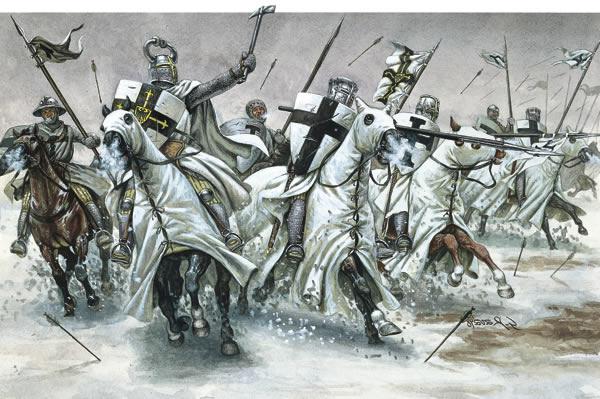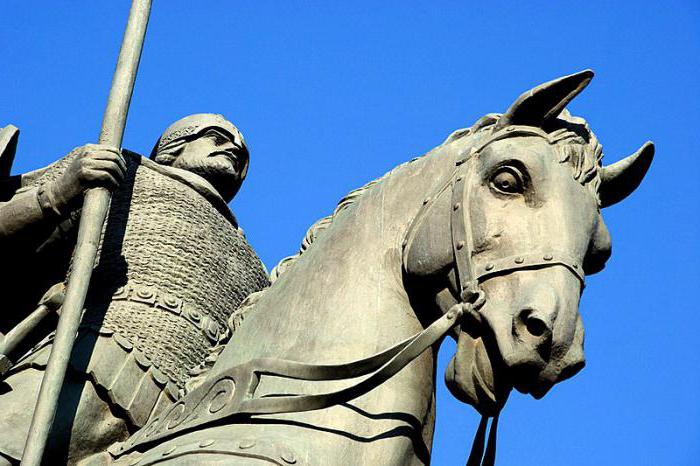Battle of Lake Peipsi. Description of events
One of the brightest pages of historyThe Middle Ages are the Crusades. As a rule, they are associated with an attempt to expand Christianity to the Middle East, and struggle against Muslims, but this interpretation is not entirely correct.
When a series of crusades began to recruitrevolutions, the papacy, which was their main initiator, realized that these campaigns can serve Rome to achieve political goals not only in the fight against Islam. So the multi-vector nature of the Crusades began to be formed. Expanding geography, the Crusaders turned their gaze to the north and north-east.
By the time at the borders of Eastern Europeformed a strong enough stronghold of Catholicism in the face of the Livonian Order, which was the product of the merger of two German spiritual and Catholic orders - the Teutonic and the Order of the Swordsmen.
Speaking in general, the prerequisites forthe advance of the German knights to the east was long overdue. As early as the 12th century, they began to seize the Slavic lands behind the Oder. Also in the sphere of their interests was the Baltic region, inhabited by Estonians and Karelians, who at that time were pagans.
The first sprouts conflict between the Slavs and the Germanstook place already in 1210, when the knights invaded the territory of modern Estonia, having entered into a struggle with the Novgorod and Pskov principalities for influence in this region. The reciprocal measures of the principalities did not bring the Slavs to success. Moreover, the contradictions in their camp led to a split and a complete lack of interaction.
German knights, the backbone of which wereTeutons, on the contrary, managed to gain a foothold in the occupied territories and set about consolidating their efforts. In 1236, the Order of the Sword and the Teutonic united in Livonian, and the following year the Pope sanctioned new trips to Finland. In 1238 the Danish king and the head of the order agreed on joint actions against Russia. The moment was chosen the most suitable, for by that time the Russian lands were exsanguinated by the Mongol invasion.
This was also used by the Swedes, who in 1240 decided to capture Novgorod. Having landed on the banks of the Neva, they met a rebuff in the person of Prince Alexander Yaroslavich, who managed to defeat the invaders and it was after this victory that he became known as Alexander Nevsky. The battle on Lake Peipsi became the next important milestone in the biography of this prince.

But before that, between Russia and GermanyOrders for two years was a fierce struggle, which brought success to the latter, in particular, Pskov was captured, Novgorod was also under threat. In these conditions, a battle took place on Lake Peipsi, or, as it is customary to call it, the Battle of the Ice.
The battle was preceded by the liberation of Nevsky Pskov. Learning that the main forces of the enemy are going to the Russian forces, the prince blocked the way to the Livonian Order on the lake.
The battle on Lake Peipsi occurred on April 5, 1242. Knight forces managed to break through the center of Russian defense and buried themselves in the shore. The blows from the flank in the performance of the Russians took the enemy in a vice and decided the outcome of the battle. This is how the battle ended on Lake Peipsi. Nevsky reached the peak of his fame. He stayed in history forever.

The battle on Lake Peipsi has long been consideredalmost a turning point in the whole struggle against Russia against the Crusaders, but modern trends question such an analysis of events, which is more characteristic of Soviet historiography.

Some authors note that after thisthe war took a protracted character, but the threat from the knights remained still palpable. In addition, even the role of Alexander Nevsky, whose successes in the Battle of the Neva and the Battle of Ice raised him to unprecedented heights, are challenged by such historians as Fenell, Danilevsky and Smirnov. The battle on Lake Peipsi and the Battle of the Neva, according to these researchers, are embellished, however, like the threat from the Crusaders.
</ p>







